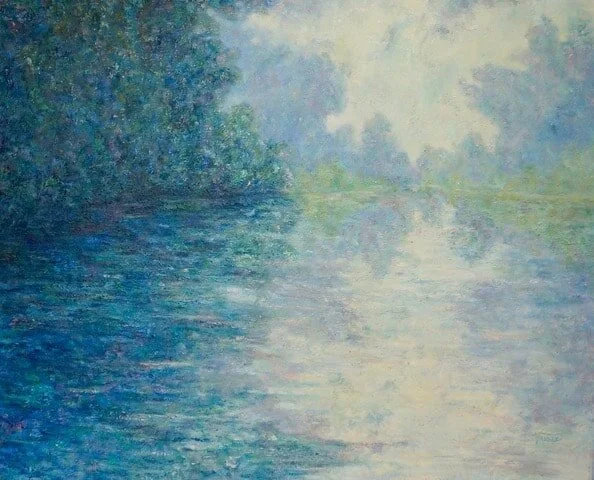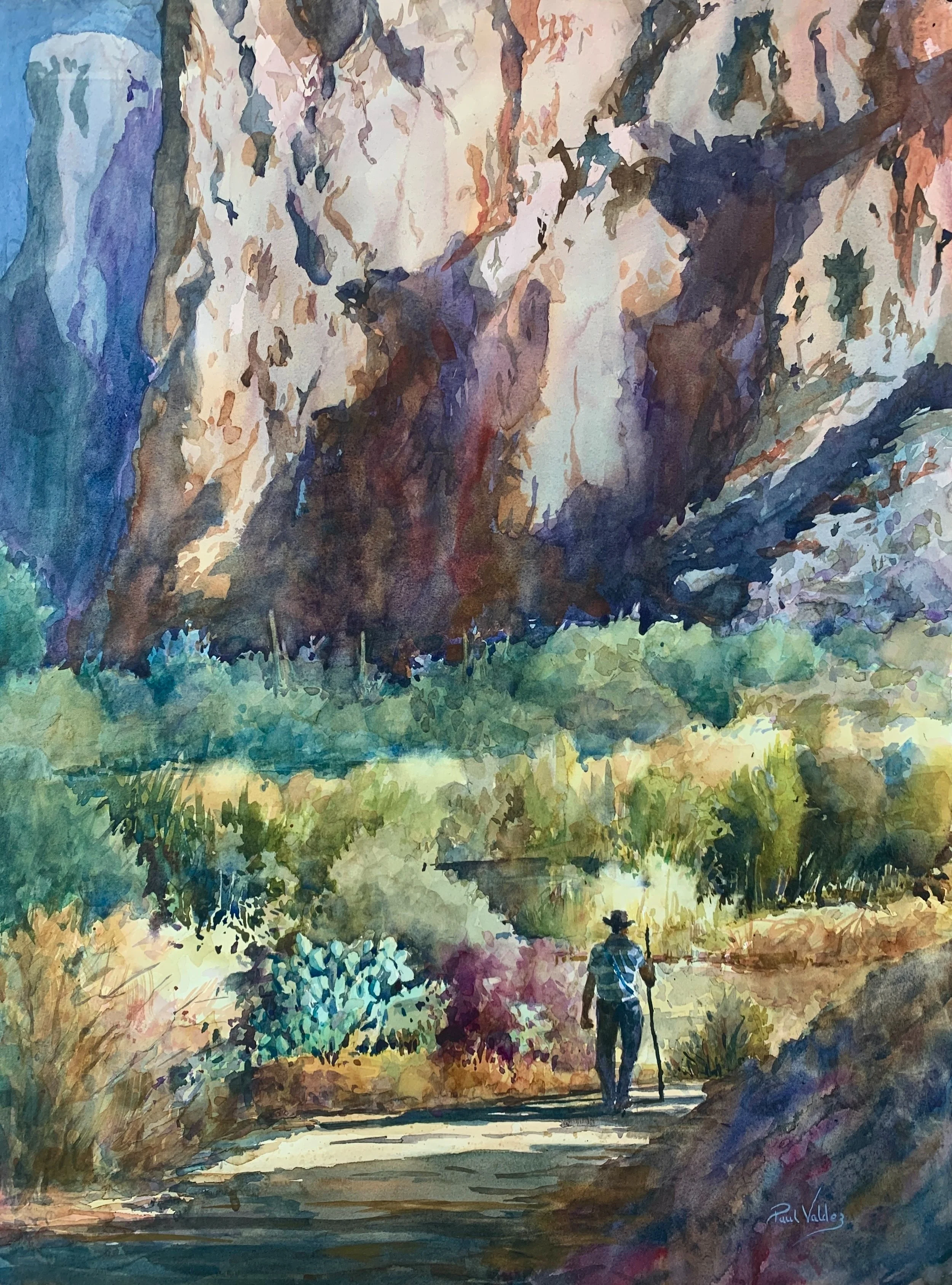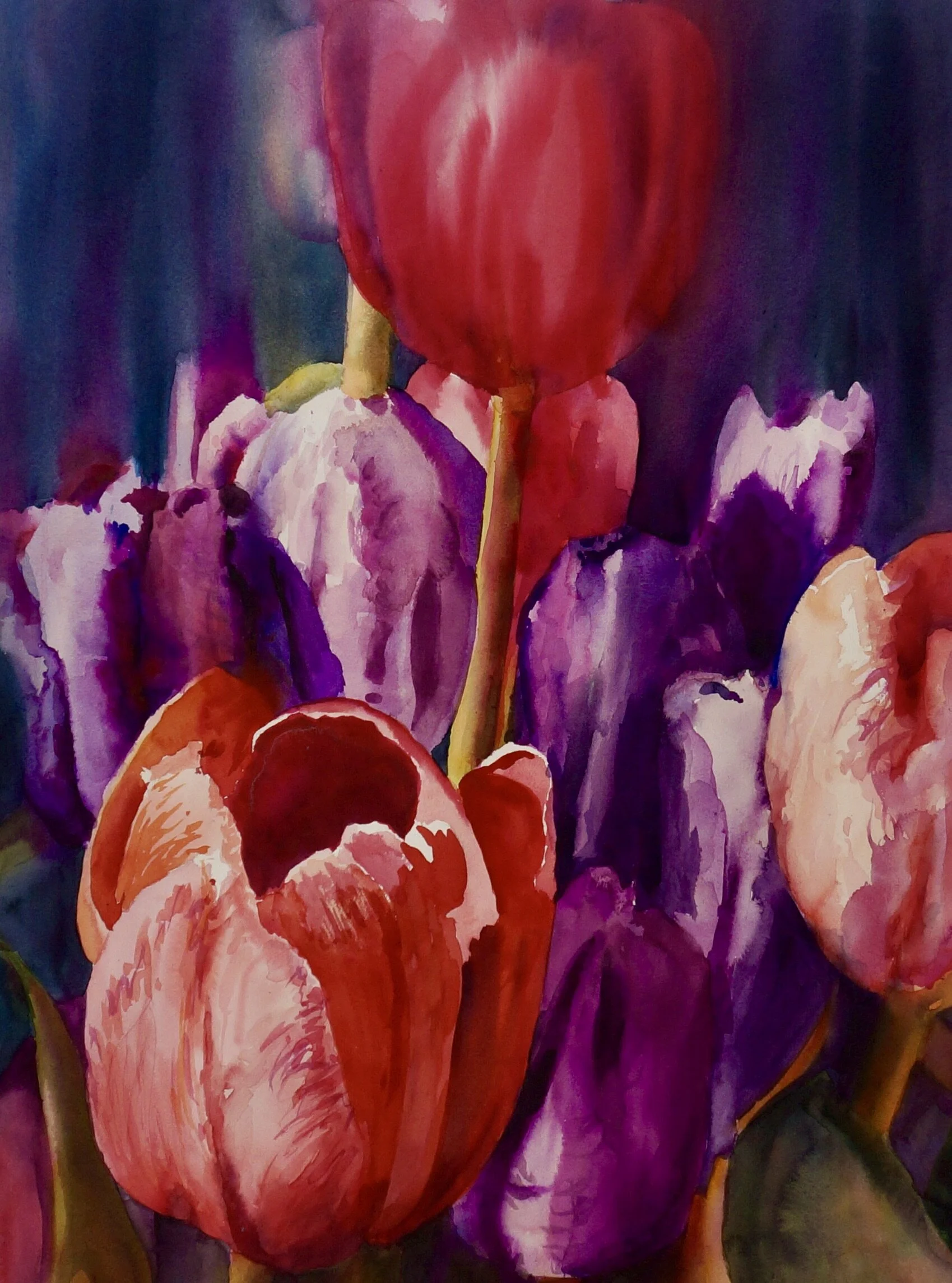Part 11: Paper Manipulation | Do Not Be Afraid of Watercolor Series
Good morning. My name is Paul Valdez. And I welcome you to the Do Not Be Afraid of Watercolor series. I've done watercolors for over 30 years and I've kind of had to learn the hard way.
This video series is designed to help make watercolor easier, more fun, more productive as you become more comfortable with watercolor.
Colors:
Transparent Yellow
Ultramarine Blue
Permanent Rose
Materials:
Arches 140 lbs paper
Water Bottle
Bulldog Clips
Video Transcription:
Today, we're going to talk a little bit about paper manipulation and we've done this in a tiny little bit in some of the previous videos. But today, I'm going to try to have you understand what I mean by paper manipulation.
For the longest time, I used to fix my paper on a board and put it on a table and they're it set for the entire class or painting session. Then I saw this artist next to me, pick up her board. It and turn it up, down, sideways.
Then she banged it, hard on the table twice, to get the paint moving. It was quite eye-opening. So I decided I wanted to try it and it opened up doors of creativity. So what the heck took me so long to see and realize that there was more to just a brush and applying the paint to the paper.
Well in just 11 short videos. Hopefully, I will open your eyes to endless possibilities. Let me do a short demonstration for you. So I have a quarter sheet of watercolor paper. This is Arches, 140 lbs paper and I'm going to take a little bit of transparent yellow and I'm just going to place it.
As you can see, it's sort of on the wet side, and I'm just going to place it in certain areas. So I want it wet I don't want it medium. I want there to be a line and I'm going to actually create some, and leave, some white areas of negative space in this to show you how it's so interesting When painting, when you paint wet on dry that the paint pretty much even at this angle stays where you want it.
So I'm just kind of putting some transparent yellow here, throughout the paper, just a design. Nothing. Nothing exciting. Trust me. This is just for fun. And I'm going to take a little bit of this is ultramarine blue again, kind of wet. Bring it up from this top. As I do. I'm going to let it just touch. The certain areas of the yellow and in some areas, I'm not. Do it over here as well.
Let it touch. I'm going to kind of get it a little more wet and let it touch right here. And then I'm going to bring it down on the side here and we'll let this. I load my brush up with a nice watery mixture and let the two intermingle like that. I'm going to do one more in here, and let this touch there and touch here leaving that white area there. I only have two colors on here, but I'm going to go ahead and now allow the paper.
To play. So this is paper manipulation. This is where I take my my paint. I've got this blue that wants to come in right in here. And I've got this, look at this green, that this blue is totally turning into. So I'm just going to manipulate it a little bit. Give it a little knock. Let this, I want this to come down a little further. Give it a little, that's kind of nice. And so I'm just kind of urging it to go certain areas. Okay, so now I have three colors and I'm going to take a third, going to take a little bit of permanent rose.
Again I want this to have some power, but also some water and let's do a little bit right in here. And in one area, we're going to let it touch the green here. In this area we’re the let it touch the yellow. Come on. There you go. Alright. I'm going to get a little bit more and then this time we're going to do a big ol thing here. Let that touch.
And I'm going to bring in some more transparent color. So far I've used transparent yellow. Ultramarine blue. And permanent Rose. Okay. So now I've got all this going on here and you will see as I move the paper around, you'll see the paint moving and I want this, I’m mostly interested right here and getting that to move along this edge. So I'm kind of encouraging it. Oh, that was a nice little thing. So certain things happen that you're not really ready for. And then we've got this the yellow and the permanent Rose created that brown.
So I moved it up there and now we've got that going and now you can take your water bottle and now you can kind of encourage that to go just a little bit. Come on down here. All right, and then we could spray this area here. Totally clean. And then. And we're creating these gorgeous little areas, but you'll notice that where I sprayed it stays and it's creating this gorgeous Brown.
And now if it's really difficult sometimes to accurately spray your bottle. So what I'm going to do is I'm just going to take some water clean water, (sort of) then just touch it right there and allow that to do that. So it's really kind of cool that you can just take your water. And create a little line and it'll follow that line. It'll do its little thing. It'll come off the edge here.
You can bring in a little bit of, this is permanent Rose. So I'm allowing that to come in and allowing that to mix in there too. I think I want this permanent Rose to actually come in here. So I'm going to give it a little encouragement. The yellow is a little dry right now. That's okay. That allows you to do different things. It allows you to move the color. That is the wettest, which is right now, the permanent Rose here.
It is mixing now in with a green and blue. Just gorgeous. You can do so many things and I could go on and on with this. But as you can see, this is not only creatively awesome. It's fun. And when something is fun, it gets easier. And stress-free. I encourage you all to try this with different colors, different values. All the while leaving it. Leave certain areas.
Let let the paint do its thing and it just allows you to mix colors that if you had mixed here on your palette or tried to mix on your paper, they would turn into mud. But when left by itself and manipulated, it creates lovely effects, try pounding, the board to get colors to move, set it on its corner to get diagonal flows.
Then, imagine where you could use this, a backdrop for a landscape, a sky. Maybe a flower, maybe after letting it dry. You stop. Take a look. Turn it different ways. No telling what you'll see. Watercolor paint looks so different when it's dry. And once it's dry, you can come back in and add some more transparencies, that’s the beauty of watercolor.
I truly appreciate you watching this video. I hope you learned something. Please share and like until next time. Thank you.













